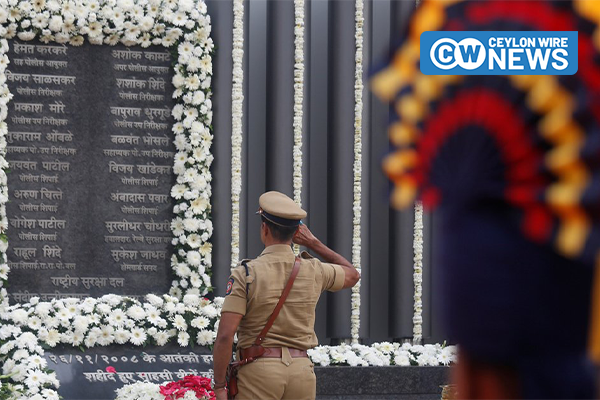Coordinated Terror Strikes in Mumbai Leave City Reeling
On the night of November 26, ten heavily armed attackers launched a series of coordinated assaults across Mumbai, targeting prominent locations and civilians. The attackers, reportedly linked to the Pakistan-based group Lashkar-e-Taiba, wielded automatic weapons and grenades to carry out their plan. Key sites affected included the Chhatrapati Shivaji railway station, Leopold Café, two hospitals, and a theatre in southern Mumbai.
While several attacks were over within hours, the crisis intensified at three locations where hostages were taken: the Nariman House, home to a Jewish outreach centre, and the luxury hotels Oberoi Trident and Taj Mahal Palace & Tower. The violence at these sites persisted for an extended period, leaving the city in shock and mourning.
Mumbai Siege Ends with Heavy Casualties and Unparalleled Tragedy
The standoff at Nariman House concluded on the evening of November 28, leaving six hostages and two attackers dead. Meanwhile, guests and staff at the Oberoi Trident and Taj Mahal Palace hotels endured hours of terror, trapped by gunfire or held as hostages. Indian security forces successfully ended the siege at the Oberoi Trident by midday on November 28, while the Taj Mahal Palace operation extended into the next morning.
The attacks resulted in at least 174 fatalities, including 20 security personnel and 26 foreign nationals, with over 300 people injured. Among the attackers, nine were killed, and one was captured alive.
Unraveling the Identity and Motives Behind the Mumbai Attackers
Amid initial confusion about the perpetrators, an e-mail claiming responsibility for the attacks was sent by a group calling itself Mujahideen Hyderabad Deccan. This claim was debunked when the e-mail was traced to a computer in Pakistan, and evidence pointed to the involvement of Lashkar-e-Taiba. Investigations revealed the attackers had undergone extensive guerrilla-warfare training in Lashkar-e-Taiba camps. The lone captured attacker, Ajmal Amir Kasab, disclosed that the group prepared at the headquarters of Jamaat-ud-Dawa in Muridke before departing for Mumbai via Karachi.
Their journey included hijacking an Indian fishing boat, killing its crew, and using inflatable dinghies to land near Mumbai’s Gateway of India monument. Once ashore, the attackers split into teams to target multiple sites. Kasab’s confession detailed the operation’s planning but was later retracted. He faced trial for murder and waging war, ultimately being found guilty and sentenced to death in May 2010, with his execution carried out two years later.
Subsequent arrests deepened the understanding of the plot. In 2012, Delhi police apprehended Sayed Zabiuddin Ansari, suspected of training and directing the attackers. Meanwhile, Pakistani-American David C. Headley, who admitted to aiding in the attacks’ planning, was sentenced in the U.S. to 35 years in prison in 2013.
Fallout of the Mumbai Attacks: Pakistan’s Alleged Connections and Diplomatic Repercussions
Evidence linking the Mumbai attacks to elements within Pakistan prompted India to request the presence of Lieut. Gen. Ahmed Shuja Pasha, head of Pakistan’s intelligence agency, as part of its investigation. Although Pakistan initially agreed, it later reneged, offering to send a representative instead. The attacks strained Indo-Pak relations, halting the peace process and sparking allegations of Pakistani inaction against terrorist groups. India’s external affairs minister, Pranab Mukherjee, warned of serious consequences, stating that “business as usual” was no longer an option. This tension led to the cancellation of India’s cricket team’s tour of Pakistan, planned for early 2009.
The global response was swift and supportive of India’s stance. Diplomatic visits by U.S. Secretary of State Condoleezza Rice and British Prime Minister Gordon Brown underscored international concern over the escalating tensions between the nuclear-armed neighbors. While avoiding a military buildup akin to the response after the 2001 parliament attack, India focused on diplomatic measures, seeking sanctions against terrorist organizations.
India urged the UN Security Council to impose sanctions on Jamaat-ud-Dawa, arguing it operated as a front for Lashkar-e-Taiba, a group banned by Pakistan in 2002. On December 11, 2008, the Security Council complied, officially designating Jamaat-ud-Dawa a terrorist organization and imposing sanctions, marking a significant step in the global fight against terrorism.
Pakistan’s Response to Mumbai Attack Allegations Raises Questions
On December 8, 2008, Pakistan announced the arrest of Zaki-ur-Rehman Lakhvi, a senior Lashkar-e-Taiba leader suspected of masterminding the Mumbai attacks. In the days that followed, Pakistani security forces conducted raids on Jamaat-ud-Dawa offices nationwide. However, this enforcement effort was short-lived, with security measures around the group’s offices easing soon after. Prime Minister Yousaf Raza Gillani defended Jamaat-ud-Dawa, emphasizing its “welfare activities” and the thousands who benefited from them.
Pakistan argued that India had not provided sufficient evidence to act against many of the suspects and insisted that any such evidence should be shared diplomatically rather than through public channels. Moreover, Pakistan rejected India’s demand to extradite 20 individuals accused of involvement in various attacks on Indian soil.
Despite these denials, testimony during the 2011 trial of David Headley, a Pakistani-American involved in planning the attacks, implicated both Lashkar-e-Taiba and Pakistan’s intelligence agency in the Mumbai operation, adding weight to India’s allegations.
India’s Response to Security Lapses Exposed by Mumbai Attacks
The Mumbai attacks highlighted critical vulnerabilities in India’s security apparatus, particularly in dealing with urban terrorism marked by symbolic, multi-target strikes and high casualties. Investigations revealed that both Indian and U.S. intelligence agencies had issued warnings prior to the attacks, but these were dismissed due to a lack of “actionable intelligence.” Additionally, delays in deploying the National Security Guards—who arrived at the scene nearly 10 hours after the initial assault—underscored systemic inefficiencies. Coordination between central authorities in New Delhi and Maharashtra state officials was also found lacking, further hampering the immediate response.
Amid widespread criticism, India’s interior minister, Shivraj Patil, resigned on November 30, 2008, accepting moral responsibility for the crisis. In the wake of the attacks, the Indian government undertook significant reforms to enhance counterterrorism efforts. On December 17, 2008, parliament approved the establishment of the National Investigation Agency, modeled on the U.S. Federal Bureau of Investigation, to handle terrorism cases nationwide. Amendments to the Unlawful Activities (Prevention) Act introduced stricter provisions for combating and investigating terrorism.
Though the Mumbai attacks were not as extensive as the September 11, 2001, attacks in the U.S. in terms of scale or financial impact, they provoked a similarly strong national and international outcry. The events served as a stark reminder of the evolving nature of terrorism and reinforced the urgency of strengthening counterterrorism measures.









